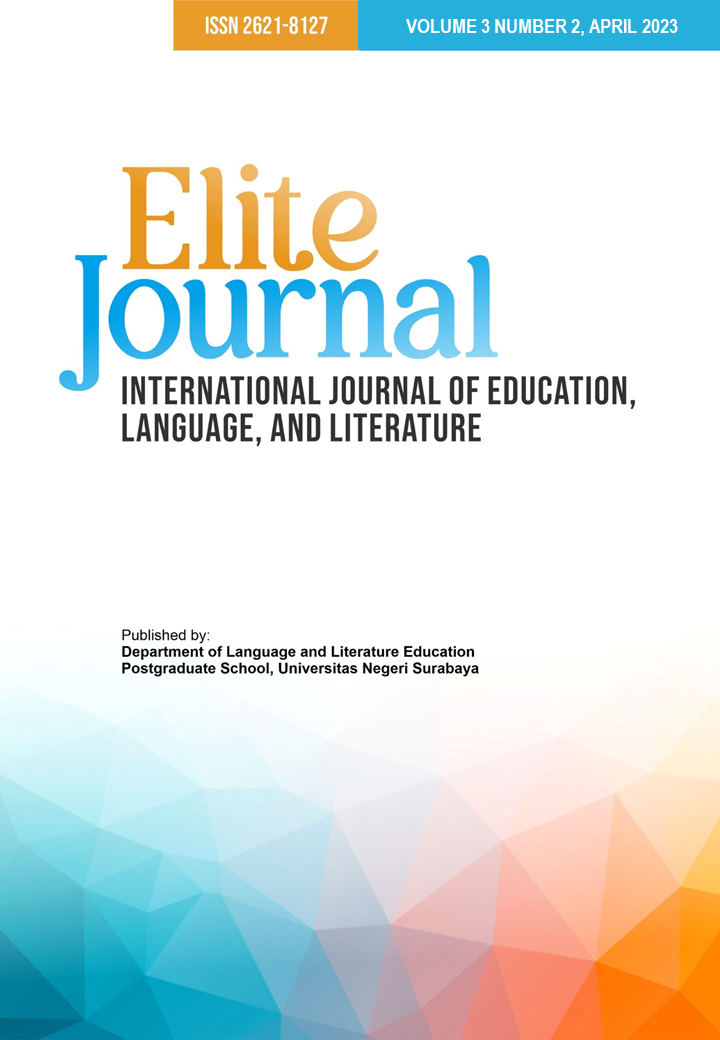FIGURATIVE LANGUAGE USED IN ED SHEERAN'S SONG "GIVE ME LOVE"
DOI:
https://doi.org/10.26740/elitejournal.v3n2.p67-76Keywords:
figurative language, Give Me Love, lyrics, songAbstract
Figurative language is a language intended to create images, associations, or other effects in the minds of readers or listeners that go beyond the literal meaning of words. Although figurative language is often used to enhance the beauty of a song lyrics, not everyone who listens to a song can comprehend the message being sent. Misunderstanding can result from an improper understanding of figurative language. Therefore, this study aims to analyze the types and meanings of figurative language in a song entitled "Give Me Love" by Ed Sheeran. This study used a descriptive qualitative approach to collect the data and identify the figurative language contained in the lyrics of “Give Me Love”. The data were analyzed using the theory of figurative language by Johnson & Arp (2018) and Knickerbocker & Reninger (1963). The finding of this study shows that "Give Me Love" consists of 7 types of figurative language, namely simile, personification, hyperbole, metaphor, irony, synecdoche, and metonymy. Based on the analysis of the meaning, it can be concluded that figurative language can be used to convey messages in spoken and written form. Figurative language is very important in song lyrics to enhance the beauty of the song and convey the message to listeners.
References
Brand, C. O., Acerbi, A., & Mesoudi, A. (2019). Cultural evolution of emotional expression in 50 years of song lyrics. Evolutionary Human Sciences, 1, e11.
Prandi, M. (2017). Conceptual conflicts in metaphors and figurative language. Routledge.
Thibodeau, P. H., Matlock, T., & Flusberg, S. J. (2019). The role of metaphor in communication and thought. Language and Linguistics Compass, 13(5), e12327.
Downloads
Published
How to Cite
Issue
Section
License
Copyright (c) 2023 I Gusti Ayu Mahatma Agung, Johanes Tate Bora

This work is licensed under a Creative Commons Attribution 4.0 International License.
 Abstract views: 579
,
Abstract views: 579
, PDF Downloads: 2115
PDF Downloads: 2115





